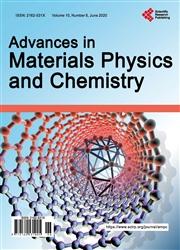The Polar Solvent Application Method for Organic Transparent Conductive Film Produced by an Inkjet Printing Method
引用次数: 1
Abstract
In recent years, flexible electronic devices have attracted much attention. Accordingly, flexible transparent conductive films are being researched actively. The commonly used indium tin oxide (ITO) transparent conductive film has limited flexibility. Therefore, we focused on poly(3,4-ethylenedioxythio- phene)/poly(styrenesulfonate)(PEDOT:PSS) as a substitute material for ITO and are engaged in producing flexible transparent conductive film using inkjet printers. To improve the characteristics of the transparent conductive film produced by inkjet printing, based on prior research, we found that cleaning the film substrate with ultraviolet/ozone (UV/O3) and post-deposition annealing and treatment using polar solvents are effective for thin films. In this study, we examined the method of applying the polar solvent. As a result, we were able to improve the homogeneity of the thin film surface by applying the polar solvent to each thin film lamination layer. The resulting characteristics obtained for a three-layer printed PEDOT:PSS thin film with polar solvent coating were resistivity of 1.49 × 10-3 Ω·cm and transmittance of 84.6%. However, we found that the surface condition changed depending on the processing method, affecting the rate of visible light transmittance.喷墨印刷法制备有机透明导电膜的极性溶剂应用方法
近年来,柔性电子器件引起了人们的广泛关注。因此,柔性透明导电薄膜的研究正在积极进行。常用的氧化铟锡(ITO)透明导电膜柔韧性有限。因此,我们专注于将聚(3,4-乙烯二氧基硫-苯)/聚(苯乙烯磺酸)(PEDOT:PSS)作为ITO的替代材料,并利用喷墨打印机生产柔性透明导电薄膜。为了提高喷墨打印透明导电膜的性能,在前期研究的基础上,我们发现用紫外线/臭氧(UV/O3)清洗薄膜基材,并使用极性溶剂进行沉积后退火和处理是有效的。本研究考察了极性溶剂的应用方法。因此,我们能够通过在每个薄膜层上应用极性溶剂来改善薄膜表面的均匀性。经极性溶剂涂层制备的三层PEDOT:PSS薄膜的电阻率为1.49 × 10-3 Ω·cm,透过率为84.6%。然而,我们发现不同的加工方法会改变表面状况,影响可见光透过率。
本文章由计算机程序翻译,如有差异,请以英文原文为准。
求助全文
约1分钟内获得全文
求助全文

 求助内容:
求助内容: 应助结果提醒方式:
应助结果提醒方式:


